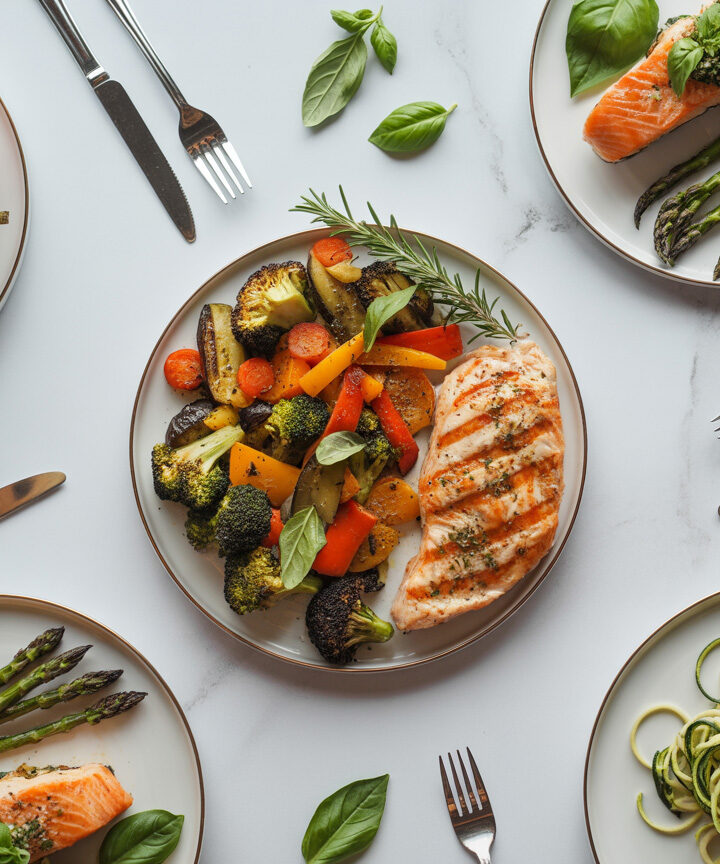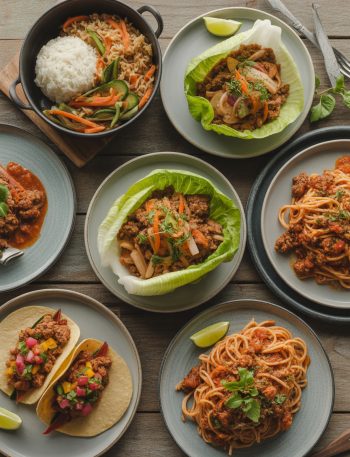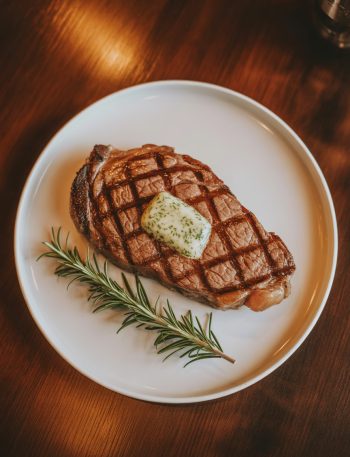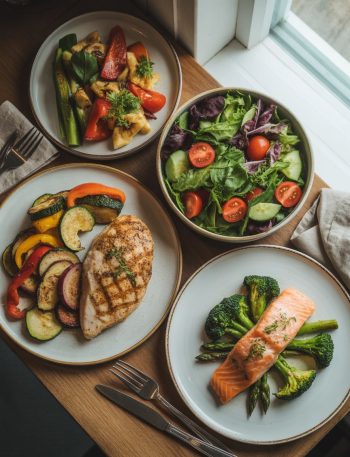Look, I get it. You’ve had a long day, you’re starving, and the last thing you want to do is spend an hour cooking something that tastes like cardboard.
But here’s the thing—healthy dinner recipes don’t have to be boring, and they definitely don’t need to sabotage your weight loss goals. I’ve been down this road myself, and I’m here to tell you that eating well at night can actually be the easiest (and tastiest) part of your day.
So let’s cut through the nonsense and get real about what actually works when it comes to healthier dinner recipes that won’t leave you feeling deprived or raiding the pantry at midnight.
Why Dinner is Make-or-Break for Weight Loss
Here’s something nobody tells you: dinner is arguably the most important meal when you’re trying to lose weight. Why? Because it’s the meal where most of us completely lose the plot. You’ve been “good” all day, and suddenly you’re face-first in a pizza box wondering where it all went wrong.
Your evening meal sets the tone for your metabolism overnight. If you load up on heavy, processed foods, your body spends all night trying to digest that mess instead of doing its repair work. But nail your clean dinner recipes, and you’ll wake up feeling lighter, more energized, and actually ready to tackle the day.
The secret? Balance. You need protein to keep you full, fiber to support digestion, and just enough healthy fats to keep things interesting. Sound complicated? It’s not. Once you get the hang of it, these healthy eating recipes for dinner become second nature.
The Foundation: What Makes a Dinner Recipe “Weight-Loss Friendly”?
Before we jump into specific recipes (trust me, we’re getting there), you need to understand what separates a weight-loss dinner from just any old meal. This isn’t rocket science, but it is important.
Protein is Your Best Friend
I cannot stress this enough: every dinner should include a quality protein source. Whether it’s chicken, fish, tofu, legumes, or lean beef, protein keeps you satisfied for hours. It also helps maintain muscle mass while you’re losing fat, which is kind of the whole point, right?
Aim for at least 25-30 grams of protein per dinner. Your body will thank you, and you won’t be hunting for snacks an hour later.
Vegetables Should Take Center Stage
Here’s where most people get it twisted. Vegetables shouldn’t be a sad afterthought on your plate—they should be the star of the show. I’m talking about loading up half your plate with colorful, fiber-rich veggies that actually taste good.
The beauty of light dinner recipes healthy in nature is that you can eat a huge volume of food without consuming many calories. Cauliflower rice, zucchini noodles, roasted Brussels sprouts, sautéed spinach—these aren’t just “diet foods.” They’re legitimately delicious when you season them properly.
Smart Carbs in Moderation
Contrary to what some diet gurus will tell you, carbs aren’t evil. You just need to be smart about them. Think quinoa, sweet potatoes, brown rice, or even a small portion of whole grain pasta. The key word here? Small.
Your body needs carbs for energy, but you don’t need a mountain of them at dinner. About a quarter of your plate is plenty.
Healthy Fats Matter
Don’t skip the fat! A little olive oil, some avocado, a handful of nuts—these additions make your meals satisfying and help your body absorb nutrients. Just don’t go overboard. We’re talking tablespoons, not cups.
My Go-To Healthy Dinner Recipes That Actually Deliver
Alright, enough theory. Let’s talk about real food you’ll actually want to eat. These are recipes I’ve personally tested (and loved), and they check all the boxes for weight loss without making you feel like you’re on some miserable diet.
Sheet Pan Lemon Herb Chicken with Roasted Vegetables
This one is stupid easy, and that’s why I love it. You literally throw everything on a pan and walk away.
What you need:
- Chicken breast or thighs (thighs have more flavor, FYI)
- Cherry tomatoes, bell peppers, zucchini, red onion
- Fresh lemon, garlic, herbs (rosemary and thyme are chef’s kiss)
- Olive oil, salt, pepper
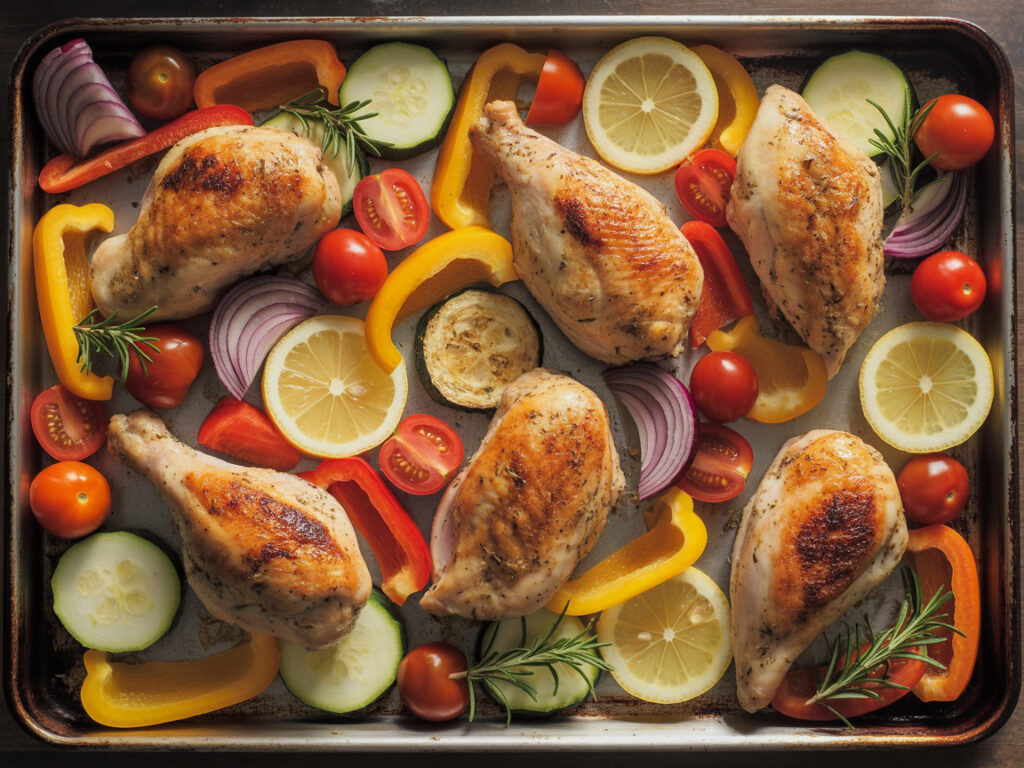
Why it works: You get lean protein, tons of veggies, and minimal cleanup. The lemon keeps things bright and interesting, so you’re not choking down bland chicken. Plus, roasting vegetables brings out their natural sweetness—game changer.
Prep takes maybe 10 minutes, cook for 25-30, and boom. You’ve got a week’s worth of dinners if you batch it.
Cauliflower Fried “Rice” with Shrimp
Okay, hear me out. I know cauliflower rice gets a bad rap, but when you make it right? It’s actually good. The trick is to make sure it’s completely dry before you cook it (nobody wants mushy rice), and you’ve got to season it aggressively.
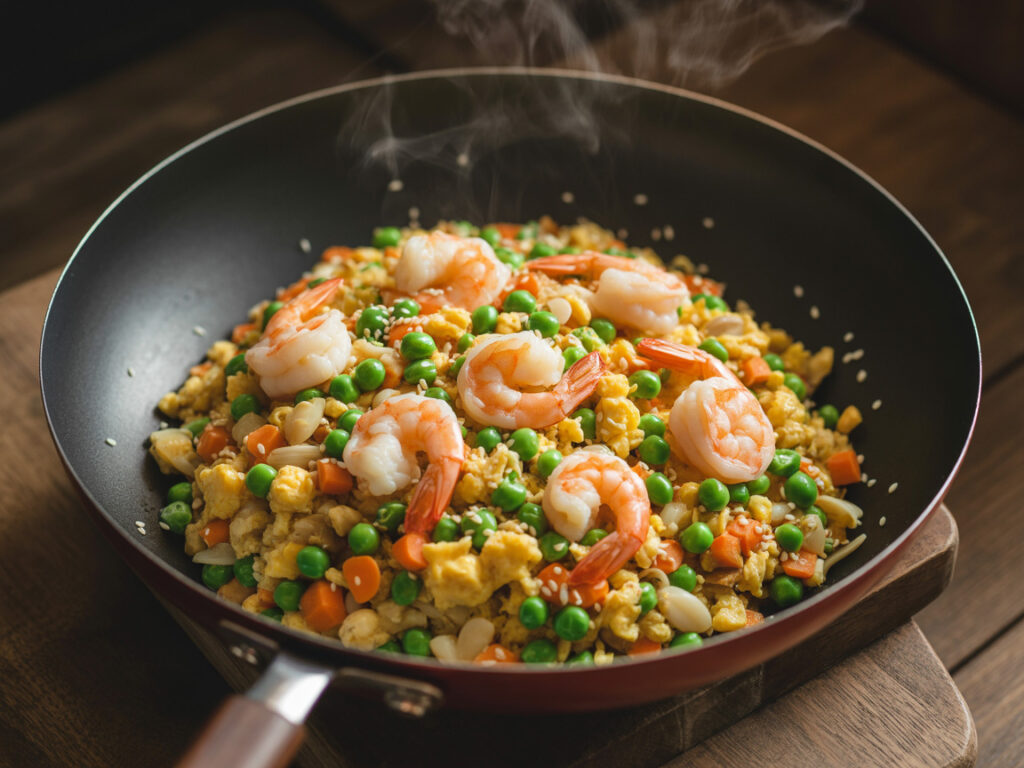
What you need:
- Riced cauliflower (buy it pre-riced, save yourself the hassle)
- Shrimp (or chicken, tofu, whatever)
- Eggs, peas, carrots, green onions
- Soy sauce, sesame oil, garlic, ginger
Why it works: Traditional fried rice can pack 500+ calories per serving. This version? About 250. You’re saving massive calories without sacrificing the flavor or satisfaction. The shrimp cooks in minutes, and you get all that savory, umami goodness you’re craving.
Pro tip: Get your pan smoking hot before you add the cauliflower. You want it to get a little charred and crispy, not steamed.
Baked Salmon with Asparagus and Quinoa
If you think you don’t like salmon, you probably just haven’t had it cooked properly. Overcooked salmon is a tragedy. Properly cooked salmon? Pure heaven.
What you need:
- Salmon fillets (wild-caught if you can swing it)
- Asparagus spears
- Cooked quinoa (make a batch on Sunday, use it all week)
- Lemon, dill, garlic, olive oil

Why it works: Salmon is loaded with omega-3 fatty acids that actually help with fat loss. Weird but true. The quinoa gives you complete protein and keeps you full, while asparagus is basically a nutrient powerhouse. This meal feels fancy but takes 20 minutes.
Season the salmon generously (salt, pepper, garlic powder), bake at 400°F for 12-15 minutes depending on thickness, and you’re golden. Literally.
Turkey and Veggie Stuffed Bell Peppers
This is comfort food that won’t wreck your progress. I make these every couple weeks because they’re so satisfying and reheat beautifully.
What you need:
- Bell peppers (any color, go wild)
- Lean ground turkey
- Diced tomatoes, onion, garlic, zucchini
- Brown rice or cauliflower rice
- Italian seasoning, a little cheese on top if you’re feeling it
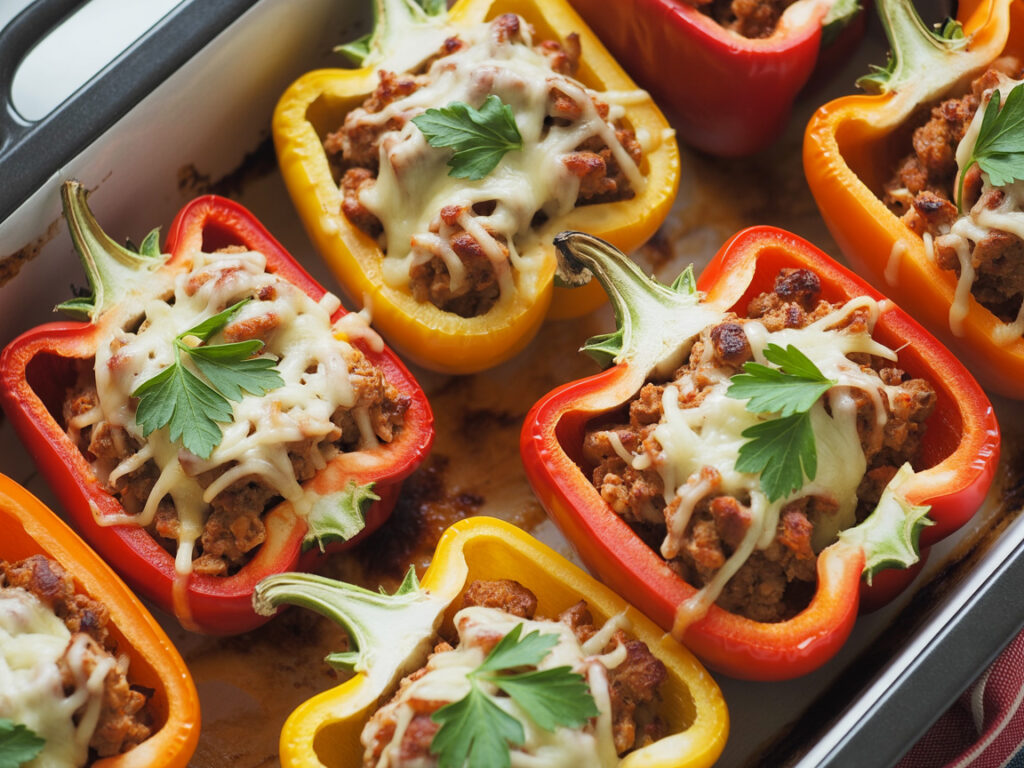
Why it works: You’re getting protein, fiber, vitamins, and it feels like a proper meal. Not some sad salad that leaves you hungry an hour later. The peppers add a natural sweetness, and the turkey is way leaner than beef without being dry.
Bake these at 375°F for about 30 minutes, and you’ve got dinner plus leftovers. Win-win.
Zucchini Noodle Shrimp Scampi
Ever wondered why restaurant scampi has like a million calories? It’s the butter and pasta. Swap those out, and you’ve got a weight-loss friendly version that still tastes indulgent.
What you need:
- Spiralized zucchini (or buy pre-spiralized, no judgment)
- Shrimp
- Garlic (lots of it), white wine, lemon juice
- A little butter or olive oil, red pepper flakes, parsley
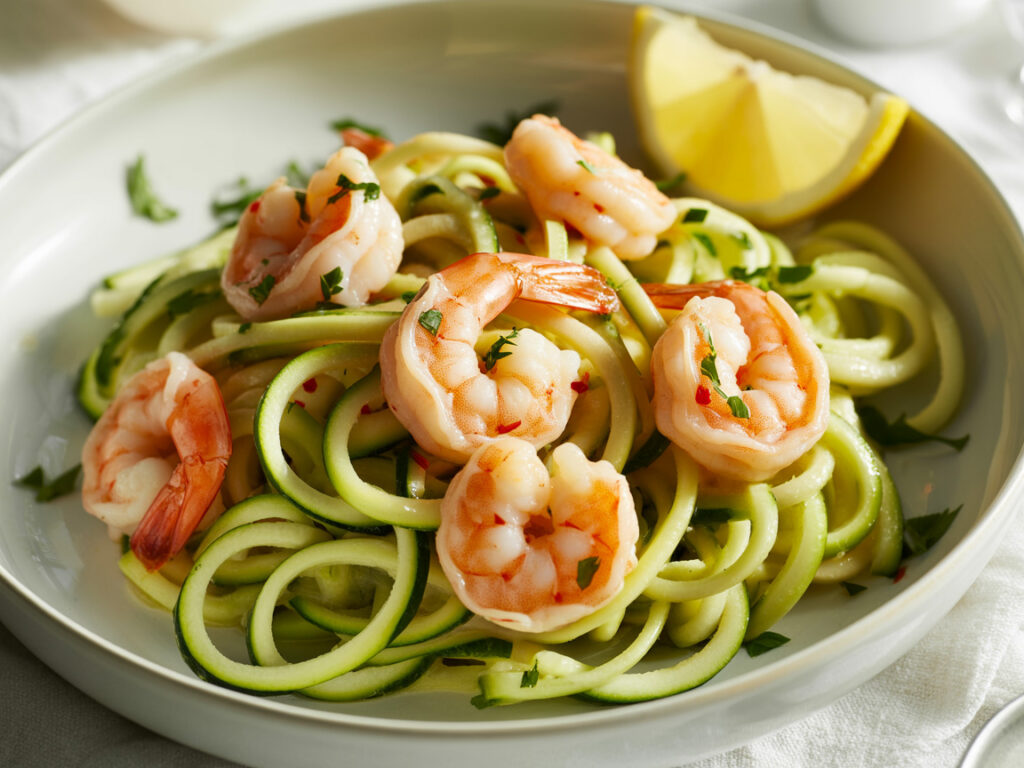
Why it works: Zucchini noodles are about 20 calories per cup versus 200+ for regular pasta. The shrimp gives you lean protein, and the garlic-lemon-wine sauce is so flavorful you won’t miss the heavy cream.
The key is to not overcook the zucchini noodles. Just toss them in the hot pan for 2-3 minutes max. You want them to have some bite, not turn into mush.
Common Mistakes That Sabotage Your Healthy Dinners
Let’s talk about where people typically screw this up, because I’ve made all these mistakes myself :/
Using Too Much Oil
“But it’s healthy fat!” Yeah, and it’s also 120 calories per tablespoon. I’ve seen people absolutely drown their vegetables in olive oil and then wonder why they’re not losing weight. Measure your oil, people. Use a spray bottle if you need to. Those calories add up fast.
Skimping on Seasoning
Healthy doesn’t mean bland. If your clean dinner recipes taste like nothing, you’re not going to stick with them. Invest in spices, herbs, citrus, vinegar, hot sauce—whatever makes food exciting for you. Salt is not the enemy (unless your doctor says otherwise). Under-seasoned food is.
Not Prepping Ahead
You know what happens when you don’t have healthy ingredients ready to go? You order takeout. Meal prep doesn’t have to mean making 20 containers of the same boring meal. Just have your proteins cooked, your veggies chopped, and your grains ready. Assembly becomes easy.
Drinking Your Calories
That glass of wine or sweet tea with dinner? It’s adding 100-200 calories that do absolutely nothing for your satiety. I’m not saying never drink with dinner, but be conscious about it. Water with lemon, unsweetened iced tea, or sparkling water are your friends.
Making Healthy Dinners Work in Real Life
Theory is great, but let’s get practical. How do you actually make this happen when you’ve got a job, kids, responsibilities, and approximately zero energy at 6 PM?
Keep It Simple
The best healthier dinner recipes are the ones you’ll actually make. Don’t aim for Instagram-worthy five-star cuisine every night. Grilled protein + roasted vegetables + a simple carb = perfectly good dinner. You don’t need to be fancy.
Batch Cook Strategically
I cook proteins in bulk on Sunday (chicken breasts, ground turkey, hard-boiled eggs), prep a big batch of quinoa or brown rice, and wash/chop all my vegetables. Then during the week, I just mix and match. Different sauces and seasonings keep things from getting boring.

Use Your Tools
Sheet pan dinners, slow cooker meals, Instant Pot recipes—these aren’t cheating. They’re smart. Why stand over a stove when you can throw ingredients in a device and walk away? Work smarter, not harder.
Spice Rotation is Key
This is my secret weapon. I rotate between different flavor profiles throughout the week: Mexican-inspired one night, Asian-style the next, Mediterranean after that, Italian, then back around. Same ingredients, totally different vibes. It keeps your taste buds interested.
The Mental Game of Healthy Dinners
Here’s something nobody talks about: the psychological aspect of eating well at night. Dinner is often tied to relaxation, reward, and comfort. When you suddenly change what you’re eating, it can feel like you’re depriving yourself.
Reframe how you think about dinner. Instead of “I can’t have [insert food],” think “I’m choosing to eat [healthy option] because it helps me feel good and reach my goals.” Subtle difference, massive impact.
Also? Don’t aim for perfection. If you nail healthy dinners 5-6 nights a week, you’re crushing it. One night of pizza or takeout isn’t going to derail anything. The all-or-nothing mentality is what actually sabotages people, not the occasional indulgence.
Quick Wins: 15-Minute Healthy Dinner Ideas
Sometimes you need dinner on the table FAST. Here are my lifesavers for those nights:
- Egg scramble with veggies: Eggs cook in minutes, load them up with whatever vegetables you have, serve with a piece of whole grain toast.
- Greek salad with grilled chicken: Pre-cooked chicken, chopped vegetables, feta, olives, quick lemon dressing. Done.
- Tuna or salmon cakes: Mix canned fish with an egg, some breadcrumbs or almond flour, pan-fry for 4 minutes per side.
- Stir-fry anything: High heat, quick cooking vegetables, protein of choice, soy sauce or teriyaki. Seven minutes, tops.
- Soup and salad combo: Keep quality soup in your pantry (check the sodium), pair with a big green salad.
None of these require a culinary degree, and they all support your weight loss goals.
Let’s Talk About Portions (Because Size Matters)
You can make the healthiest dinner in the world, but if you eat three servings, you’re not doing yourself any favors. Portion control is where the magic happens, IMO.
Use the plate method: Half your plate should be vegetables, a quarter protein, a quarter smart carbs. This visual guide is way easier than counting calories or weighing food, and it works.
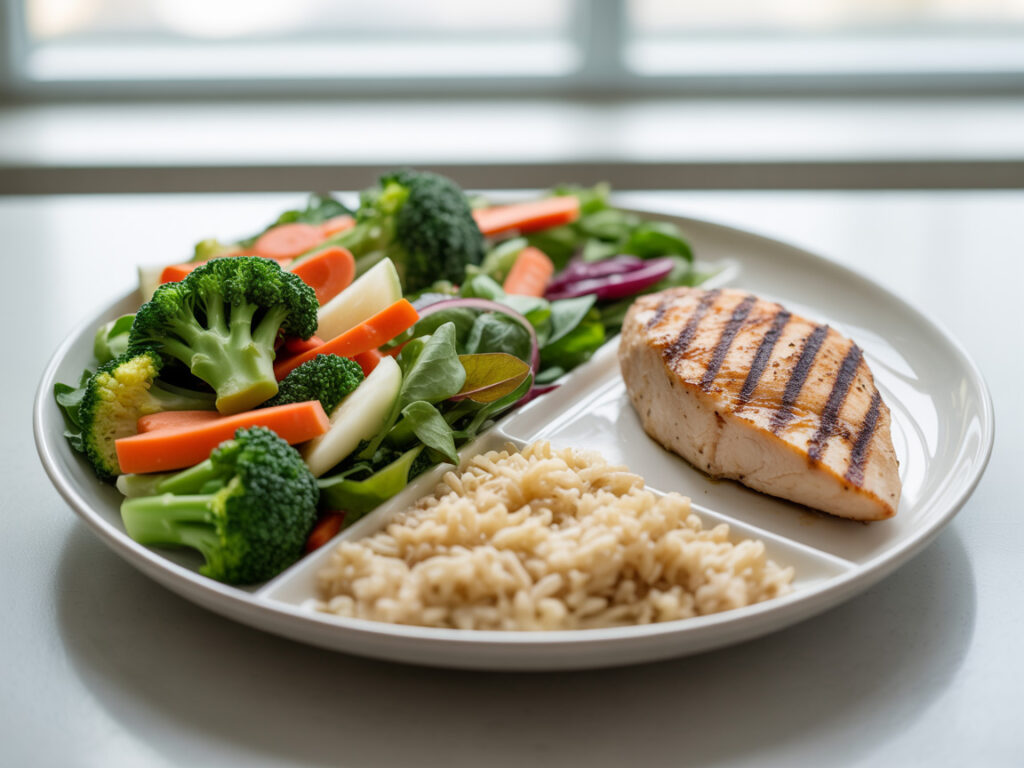
Don’t eat from the serving dish. Plate your food, put the rest away, then eat. You’re less likely to mindlessly go back for seconds. And eat slowly, for the love of everything. It takes 20 minutes for your brain to register that you’re full. Slow down, enjoy your food, and give your body a chance to send the “I’m good” signal.
Satisfying Your Cravings the Healthy Way
What do you do when you’re craving something specific that doesn’t fit into your light dinner recipes healthy plan? You don’t white-knuckle through it—that never works.
Craving something creamy? Make a cauliflower mash with a little Greek yogurt and butter. Seriously tastes like mashed potatoes but with a fraction of the calories.
Want something crunchy and savory? Roast chickpeas with your favorite spices or make baked sweet potato fries. You get that satisfying crunch without the deep-fried regret.
Need comfort food? Make a veggie-packed turkey chili or a chicken and vegetable soup. Warm, filling, comforting—all the feels without the calorie bomb.
The point is to work WITH your cravings, not against them. Find the healthier version of what you want, and you’ll be way more likely to stick with your plan long-term.
The Bottom Line
Creating healthy eating recipes for dinner that support weight loss doesn’t require you to become a chef or eat nothing but steamed broccoli and boiled chicken (please don’t do that). It requires a basic understanding of nutrition, some meal prep skills, and the willingness to try new things.
Start with one or two recipes from this guide. Make them a few times until they become second nature. Then add another couple. Before you know it, you’ll have a rotation of go-to dinners that you actually look forward to eating.
The real secret? Healthy dinners work for weight loss when they’re sustainable. If you hate what you’re eating, you won’t stick with it. Find what you enjoy, keep it simple, and remember that progress beats perfection every single time.
Now get in that kitchen and make something delicious. Your future self will thank you. 🙂

